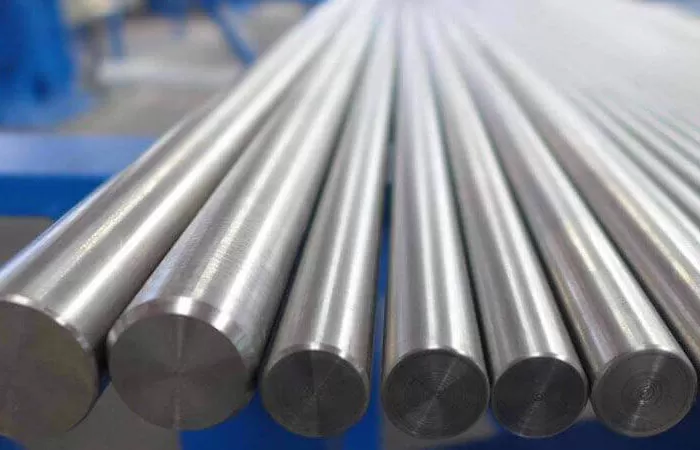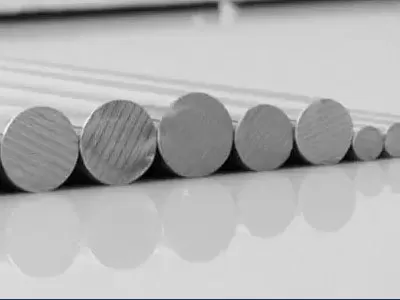
A roar echoes through the testing chamber as a next-generation gas turbine ignites pure hydrogen. Temperatures spike beyond 1100°C. The exhaust flow is rich with steam and oxygen—ideal for clean combustion, but brutal on materials.
Inside the turbine casing, slender rods brace the combustion liner, absorbing thermal cycles, stress, and oxidation. These rods aren't ordinary steel—they're Alloy 602CA, engineered for the flame frontier.
In the race toward low-carbon power, hydrogen-fired turbines are leading the charge. And Alloy 602CA rods are making sure the structure doesn't collapse under the heat.
Hydrogen is a powerful and clean fuel—but it pushes materials to their limits.
Higher flame speed than methane or natural gas
Flame temperatures >1100°C, often exceeding 1150°C
Steam-rich exhaust that accelerates oxidation
Thermal cycling from fast startups and shutdowns
Creep and grain boundary embrittlement due to sustained heat
Traditional alloys—such as Inconel 600, 601, and stainless steels like 253MA or 310S—struggle in this combination of heat, moisture, and oxygen. They oxidize rapidly, their protective films spall off, and creep sets in prematurely.
What’s needed is a material that resists heat, stress, and oxidation—all at once.
Alloy 602CA (UNS N06025) is a nickel-chromium-aluminum-yttrium (Ni-Cr-Al-Y) alloy specifically designed for extreme oxidation resistance at continuous temperatures above 1100°C.
Nickel (Ni): ~63%
Chromium (Cr): ~25%
Aluminum (Al): ~2.2%
Yttrium (Y): ~0.1%
Trace additions of Ti, Mn, and Si
Aluminum forms a stable Al₂O₃ (alumina) film, which resists oxygen and water vapor at very high temperatures
Yttrium improves oxide adherence, preventing flake-off during thermal cycling
High nickel and chromium ensure strength and corrosion resistance even in aggressive gases
Used in bar and rod form, Alloy 602CA provides mechanical support without oxidizing, creeping, or cracking.
In a pilot project involving a 400 MW hydrogen-capable gas turbine, engineers deployed Alloy 602CA rods in:
Combustion liner hanger brackets
Secondary flame shield supports
Exhaust damper pin assemblies
No scale spallation despite 350+ startup/shutdown cycles
Oxide layer remained intact (continuous alumina film confirmed via XRD)
Creep deformation <0.1%, outperforming Alloy 601 and 253MA
No failures observed during inspection, whereas adjacent stainless parts showed scaling and cracking
The operators extended maintenance intervals from 24 to 36 months—a 50% improvement in liner brace performance.
The magic behind Alloy 602CA lies in its oxide scale behavior.
Aluminum in the alloy diffuses to the surface and forms Al₂O₃, a dense ceramic oxide
Yttrium strengthens the bond between oxide and base metal, reducing spallation
This scale self-heals and remains stable even under oxidizing and wet combustion conditions
Unlike chromium oxide scales (which grow thick and flake off), the alumina film on 602CA remains thin, slow-growing, and protective—even after thousands of thermal cycles.
In addition to oxidation resistance, Alloy 602CA rods offer robust high-temperature strength:
| Property | Value at 1100°C |
|---|---|
| Creep rupture strength (1000 hr) | ~21 MPa |
| Tensile strength | ~140 MPa |
| Elongation | ~15% |
| Fatigue resistance (R=–1) | High; no surface cracking observed after 10⁶ cycles at 800 MPa alternating stress |
These properties allow rods to function reliably in load-bearing, vibrating, or expanding assemblies inside the hottest turbine zones.
| Alloy | Max Continuous Temp (°C) | Oxidation Resistance | Weldability | Thermal Cycle Tolerance | Cost (est.) |
|---|---|---|---|---|---|
| Alloy 602CA | 1200 | Excellent (Al₂O₃ scale) | Good | Excellent (Y-enhanced) | High |
| Alloy 601 | 1100 | Moderate (Cr₂O₃ scale) | Excellent | Fair | Moderate |
| Haynes 214 | 1260 | Excellent | Moderate | Good | High |
| 253MA Stainless | 1090 | Fair (scales crack) | Good | Poor | Low |
Conclusion: Alloy 602CA is the best combination of oxidation resistance, weldability, and scale stability under hydrogen combustion conditions.
With the shift toward low-carbon and renewable energy, Alloy 602CA rods are playing a growing role in:
Hydrogen co-fired gas turbines
Ammonia/hydrogen blended burners
Carbon capture (CCS) reheat coils and stack liners
Biomass incineration with corrosive flue gases
Glass, ceramic, and metal powder sintering kilns
They’re also under consideration for nuclear small modular reactors (SMRs)—especially in non-core high-temp support structures.
As power generation moves into the hydrogen era, alloys must evolve to match the extreme oxidative, thermal, and dynamic loads of new combustion systems.
Alloy 602CA rods don't just survive this future—they're built for it. With ceramic-scale armor, high creep resistance, and proven weldability, they anchor the hottest zones of tomorrow's cleanest power.
Whether in turbines, reheat stacks, or incinerators—they're the rods that never flinch.

2025-11-19 14:09:22

2025-11-07 17:27:49

2025-11-05 15:44:44

25th floor, C3 Building, Wanda Plaza, Kaifu District, Changsha, Hunan Province, China